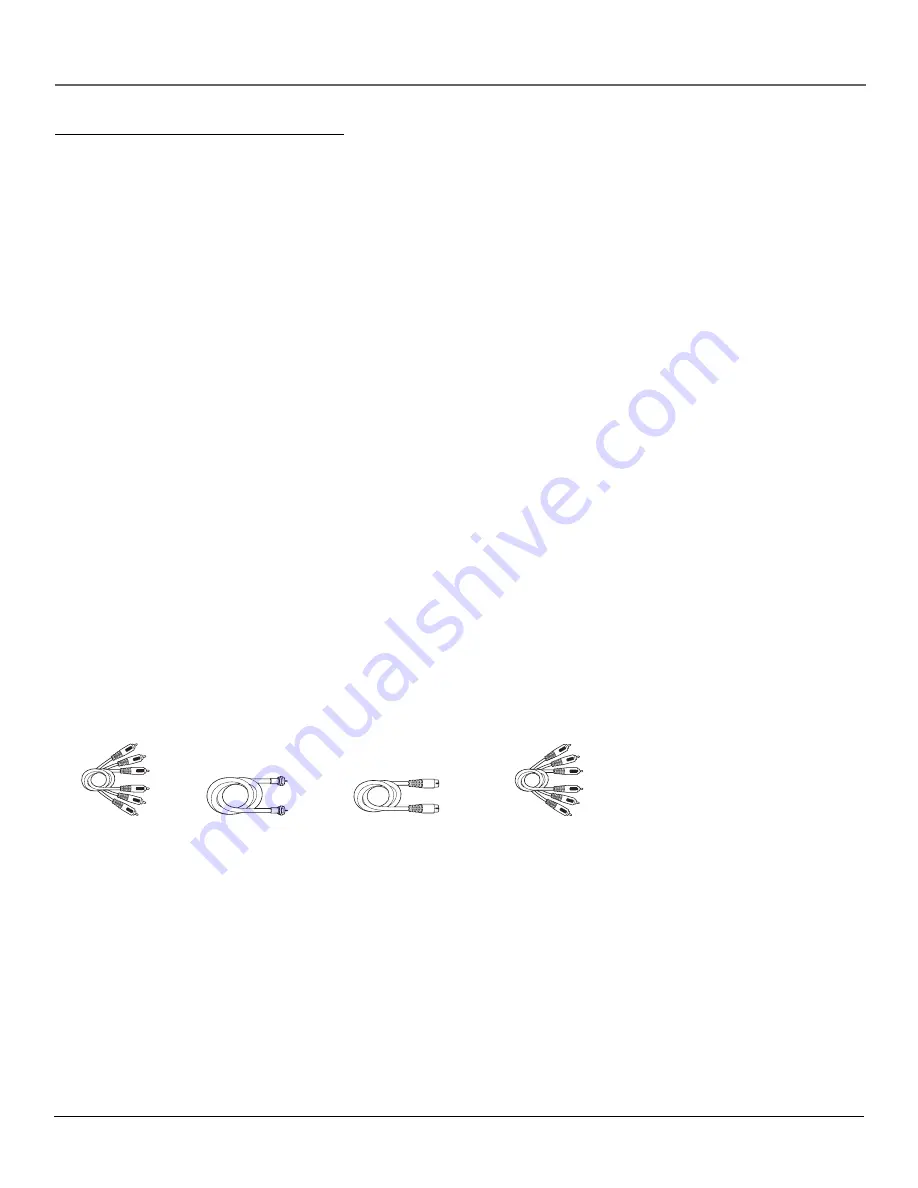
Connections & Setup
4
Chapter 1
Graphics contained within this publication are for representation only.
Things to Consider Before You Connect
Protect Against Power Surges
•
Connect all components before you plug any of their power cords into the wall outlet.
•
Turn off the TV and/or component before you connect or disconnect any cables.
•
Make sure all antennas and cables are properly grounded. Refer to the Important Safety Instructions on page 1.
Protect Components from Overheating
•
Don’t block ventilation holes on any of the components. Arrange the components so that air can circulate freely.
•
Don’t stack components.
•
When you place components in a stand, make sure you allow adequate ventilation.
•
If you connect an audio receiver or amplifier, place it on the top shelf so the heated air from it won’t flow around
other components.
Position Cables Properly to Avoid Audio Interference
•
Insert each cable firmly into the designated jack.
•
If you place components above the TV, route all cables down the side of the back of the TV instead of straight
down the middle of the TV.
•
If your antenna uses 300-ohm twin lead cables, do not coil the cables. Also, keep the twin lead cables away from
audio/video cables.
Important Stand and Base Safety Information
Choose the location for your TV carefully. Place the TV on a stand or base that is of adequate size and strength to
prevent the TV from being accidentally tipped over, pushed off, or pulled off. This could cause personal injury and/or
damage the TV. Refer to the Important Safety Instructions on page 1.
Use Indirect Light
Don’t place the TV where sunlight or room lighting will be directed toward the screen. Use soft or indirect lighting.
Cables Needed to Connect Components to Your TV
The pictures below show the cables needed for the connections represented in this book.
Audio/Video cables
Component Video (Y•Pb•Pr)
cables
S-Video cable
Coaxial cable





























